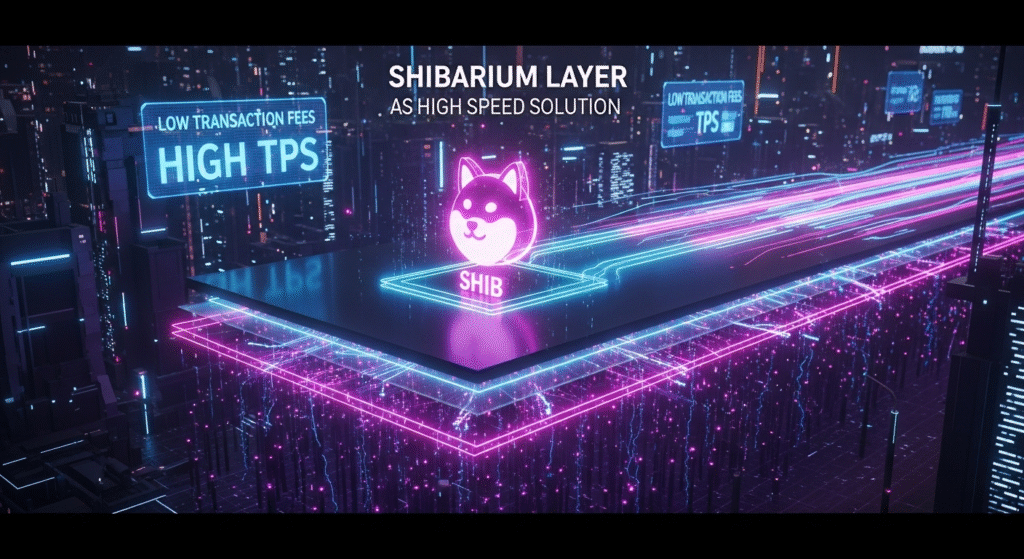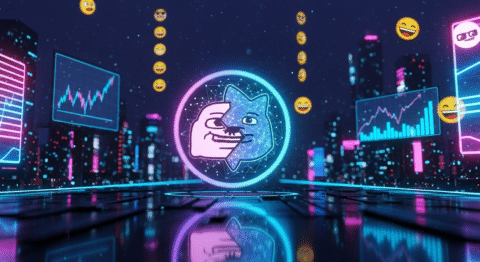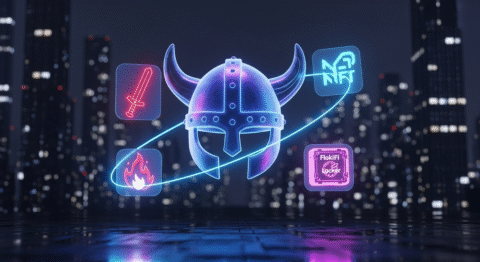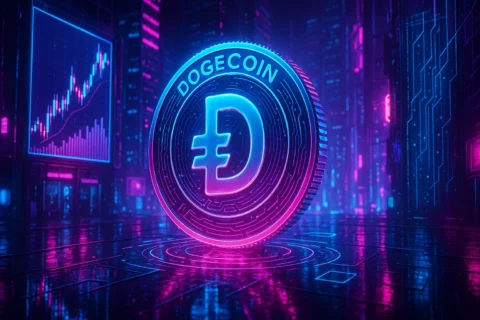Shibarium Layer Top 5 Benefits for Meme Coin Holders
Are you a meme coin enthusiast struggling with high gas fees and slow transaction speeds on Ethereum? Do you ever wonder if there’s a way to truly unlock the potential of your SHIB holdings without the usual blockchain frustrations? If so, you’re in the right place. The cryptocurrency landscape is constantly evolving, and understanding the latest innovations can be the difference between holding onto digital assets and watching their value stagnate. Today, we’re diving deep into the game-changing advantages, focusing on how Shibarium Layer is poised to revolutionize the experience for meme coin holders, particularly those invested in the Shiba Inu ecosystem.
Crypto Market Overview
The cryptocurrency market is a dynamic and often volatile arena, characterized by rapid innovation and shifting investor sentiment. Currently, we’re witnessing a surge of interest in altcoins, with many exploring novel use cases beyond Bitcoin and Ethereum. Meme coins, in particular, have carved out a significant niche, demonstrating remarkable community-driven growth and capturing widespread attention. Recent market data indicates a renewed optimism in the altcoin sector, driven by technological advancements and increasing institutional adoption. For instance, metrics from CoinMarketCap and CoinGecko reveal a steady climb in the total market capitalization of altcoins, often outpacing Bitcoin’s growth during certain periods. This trend is fueled by the sheer volume of new projects launching, each promising unique features or community engagement models.
The Core Concept: How Shibarium Layer Actually Works
To truly grasp the benefits Shibarium Layer offers, it’s essential to understand its foundational elements and how it operates within the broader blockchain ecosystem.
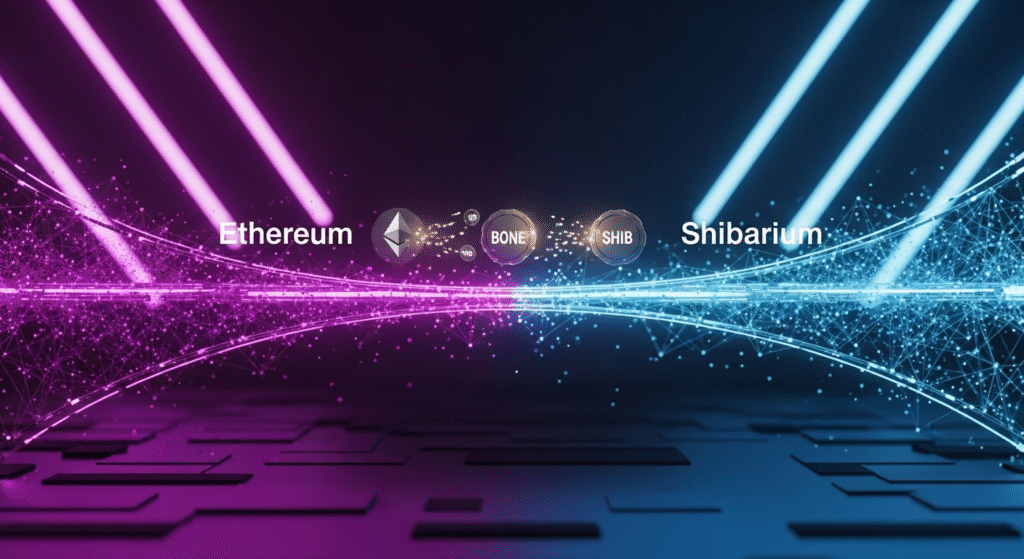
What Are Altcoins / Meme Coins / Airdrops?
Let’s break down these terms to clarify their roles in the crypto world:
- Altcoins: This is a broad term referring to any cryptocurrency other than Bitcoin. It encompasses thousands of digital assets, each with varying purposes, functionalities, and underlying technologies. Altcoins can range from utility tokens that power specific decentralized applications (dApps) to stablecoins designed to maintain a fixed value. They represent the diverse innovation happening within the blockchain space, pushing the boundaries of what decentralized technologies can achieve.
- Meme Coins: A subcategory of altcoins, meme coins are cryptocurrencies inspired by internet memes, jokes, or cultural trends. While often starting as a lighthearted project, many meme coins have gained significant traction due to strong community support and viral marketing. Shiba Inu (SHIB), Dogecoin (DOGE), and Pepe (PEPE) are prime examples. Their success often hinges on community engagement, social media buzz, and the ability to foster a loyal following. Despite their origins, some meme coins are evolving to incorporate more utility, aiming to move beyond their speculative nature.
- Airdrops: In the cryptocurrency context, an airdrop is a marketing tactic where a new cryptocurrency project distributes a certain number of coins or tokens to various wallet addresses for free. This is typically done to raise awareness and adoption of a new coin, or to reward existing holders of a certain cryptocurrency. For example, a project might airdrop tokens to all holders of a specific altcoin or to users who have interacted with a particular dApp. It’s a way to decentralize token distribution and build a community from the ground up.
Key Components & Technologies
Shibarium Layer operates as a layer-2 scaling solution built on top of the Ethereum blockchain. This means it leverages the security and decentralization of Ethereum while offering its own set of features to improve transaction speeds and reduce costs. The core technologies and concepts that enable Shibarium Layer’s functionality include:
- Blockchain Technology: Like Ethereum, Shibarium is built on principles of distributed ledger technology. This ensures transparency, immutability, and a high degree of security for all transactions processed on the network.
- Proof-of-Stake (PoS) Consensus Mechanism: Unlike Ethereum’s previous Proof-of-Work system, Shibarium uses a PoS consensus mechanism. In PoS, block validators are chosen based on the amount of cryptocurrency they “stake” or lock up as collateral. This is significantly more energy-efficient and allows for faster transaction finality compared to PoW.
- Sharding (Conceptual): While not a literal blockchain sharding in the Ethereum 2.0 sense, Shibarium’s architecture is designed to process transactions parallelly and independently of the main Ethereum chain. This parallel processing capability is a key component of its scalability.
- Bridging Mechanism: Shibarium allows for seamless asset transfer between the Ethereum mainnet and the Shibarium network. This “bridge” enables users to move their tokens, such as SHIB, BONE, and LEASH, onto Shibarium for faster and cheaper transactions, and then back to Ethereum when needed.
- Smart Contracts: Shibarium supports the deployment and execution of smart contracts, enabling developers to build decentralized applications (dApps) directly on the layer-2 network. This opens up possibilities for NFTs, DeFi protocols, and games that can benefit from Shibarium’s enhanced performance. The native token, BONE, plays a crucial role as a gas token for transactions on Shibarium, further incentivizing its utility.
The interconnection of these technologies allows Shibarium Layer to effectively offload transaction volume from the more congested Ethereum mainnet, offering a vastly improved user experience.
The Data-Driven Perspective
To truly understand the impact of Shibarium Layer, we need to look at the data and how it compares to existing solutions. The statistics speak volumes about its potential to transform the meme coin experience.
Market Data & Trends
The primary motivation behind the development of layer-2 solutions like Shibarium is to address the inherent scalability limitations of blockchains like Ethereum. For years, high gas fees and slow transaction times have been major deterrents for everyday crypto users and developers alike, particularly impacting low-value transactions common with meme coins.
- Gas Fee Reduction: Data from various blockchain analytics platforms (e.g., Etherscan, GasNow) has consistently shown average Ethereum gas fees ranging from a few dollars to over $100 during peak network congestion. On Shibarium, the objective is to reduce these fees to fractions of a cent, making microtransactions and frequent trading economically viable. Early testnet data and observed transaction costs on the live network consistently demonstrate a drastic reduction, often by orders of magnitude, compared to the Ethereum mainnet. For example, a transaction that might cost $5 on Ethereum could cost less than $0.01 on Shibarium.
- Transaction Throughput: Ethereum’s mainnet typically processes around 15-30 transactions per second (TPS). Shibarium, on the other hand, is designed to handle thousands of TPS. This increased throughput is crucial for supporting a growing ecosystem of dApps and a large user base without experiencing network slowdowns. This is a significant improvement, aligning it with other high-throughput blockchains.
- Meme Coin Market Cap Growth: While not directly attributable solely to Shibarium, the growth in the meme coin sector, particularly for projects like Shiba Inu, has been meteoric when considering their market caps. According to CoinMarketCap, the meme coin sector has seen billions of dollars in market capitalization at its peaks, underscoring the large user base and demand for more efficient infrastructure to support these digital assets. Shibarium aims to capture and enhance this existing market energy.
Tokenomics & Market Health
The tokenomics of Shibarium are intrinsically linked to the Shiba Inu ecosystem, primarily featuring BONE as the gas token and RYOSHI as the auto-liquidity generation token.
- BONE as Gas Token: BONE tokens are used to pay for transaction fees on Shibarium. This creates inherent demand for BONE, as any activity on the network requires its use. The total supply of BONE is capped at 250 million, a deliberate choice to create scarcity and potential value appreciation as network usage grows. Unlike SHIB which has a quadrillion supply, BONE’s more constrained supply can offer different investment dynamics.
- LEASH as a Utility Token: While SHIB is the primary meme coin within the ecosystem, LEASH has been positioned as a more scarce token, often associated with exclusive benefits or higher value propositions within the Shiba Inu universe. Shibarium aims to provide a platform for LEASH holders to engage with dApps and NFTs, potentially increasing its utility and demand.
- Shibarium’s Burn Mechanic: A portion of the transaction fees collected on Shibarium can potentially be used for burning SHIB tokens, the native cryptocurrency of the ecosystem. Token burns reduce the circulating supply, which, in theory, can lead to increased scarcity and value for the remaining tokens. If implemented effectively, this burn mechanism could significantly impact SHIB’s long-term deflationary potential.
The interplay between these tokens and the utility offered by Shibarium creates a robust economic model designed to support the growth of the entire Shiba Inu ecosystem. As more projects and users adopt Shibarium, the demand for BONE and potentially the utility of SHIB and LEASH are expected to increase, positively impacting the market health of these assets.
Risks, Challenges & Competition
While Shibarium Layer presents compelling advantages, it’s crucial to acknowledge the inherent risks and competitive landscape associated with any new blockchain technology, especially one servicing the highly speculative meme coin market.
Risks of Altcoins and Meme Coins
Investing in altcoins and meme coins, even with a layer-2 solution, carries significant risks:
- Volatility: Meme coins are notoriously volatile, experiencing dramatic price swings driven by social media trends and speculative trading rather than fundamental utility. This inherent volatility means holders can see substantial gains but also face the risk of significant losses.
- Market Manipulation (“Pump and Dump”): The decentralized and often less regulated nature of meme coin markets makes them susceptible to pump-and-dump schemes, where coordinated groups artificially inflate prices before selling off their holdings, leaving unsuspecting investors with worthless tokens.
- Security Vulnerabilities: While Shibarium leverages Ethereum’s security, the smart contracts built upon it, and the bridges connecting to the mainnet, can still have vulnerabilities. Flaws in smart contract code could lead to exploits and loss of funds.
- Regulatory Uncertainty: The regulatory landscape for cryptocurrencies, especially altcoins and meme coins, is still evolving. Future regulations could impact the trading, development, and accessibility of these assets.
- Project Execution Risk: The success of Shibarium Layer, and by extension the Shiba Inu ecosystem, depends on continued development, adoption, and effective management. Delays in development, lack of community adoption, or poor strategic decisions could hinder its progress.
How Does Shibarium Layer Stack Up Against Competitors?
Shibarium Layer enters a competitive market of layer-2 scaling solutions and alternative blockchains that also aim to offer faster and cheaper transactions. Here’s a comparison with some key competitors:
| Feature | Shibarium Layer | Polygon (Matic) | Binance Smart Chain (BSC) / BNB Chain | Solana (SOL) |
|---|---|---|---|---|
| Primary Focus | L2 scaling for Shiba Inu ecosystem | L2 scaling for Ethereum DApps, broader ecosystem | EVM-compatible, fast, low fees (now integrated with LayerZero) | High-performance blockchain, DeFi, NFTs, Web3 |
| Underlying Tech | EVM-compatible L2 | PoS sidechain/rollups for Ethereum | PoS | Proof-of-History (PoH) + PoS |
| Solves | High gas fees, slow transactions on Ethereum | High gas fees, slow transactions on Ethereum | High gas fees, slow transactions on Ethereum (historically) | Scalability |
| Transaction Cost | Extremely Low (fractions of a cent) | Very Low ($0.01-$0.05) | Very Low ($0.01-$0.05) | Extremely Low (fractions of a cent) |
| Transaction Speed | High (hundreds/thousands of TPS) | High (thousands of TPS) | High (hundreds of TPS) | Very High (thousands of TPS) |
| EVM Compatibility | Yes | Yes | Yes | No (uses own VM) |
| Native Gas Token | BONE | MATIC | BNB | SOL |
| Ecosystem Link | Directly tied to Shiba Inu (SHIB, LEASH) | Broad Ethereum ecosystem support | Broad dApp and DeFi support | Growing DeFi, NFT, and Web3 ecosystem |
| Community Focus | Strong focus on SHIB holders and community | Broad developer and investor community | Developer and investor community, Binance user base | Developer and innovation-focused community |
| Security Model | Inherits Ethereum security, uses own validators | Leverages Ethereum for finality (depending on solution) | PoS consensus | PoH + PoS |
Key Differentiators for Shibarium Layer:
- Deep Ecosystem Integration: Shibarium isn’t just a generic scaling solution; it’s purpose-built for the Shiba Inu ecosystem. This tight integration means native assets like SHIB, LEASH, and BONE are handled seamlessly, and the development is directly influenced by the needs and desires of the SHIB community.
- Community-Driven Development: The vision for Shibarium is heavily shaped by community feedback and the desire to create a comprehensive ecosystem around Shiba Inu. This can foster significant user loyalty and adoption within its target demographic.
- BONE Utility: The strategic positioning of BONE as the gas token creates a direct utility and demand driver that is unique to Shibarium, aiming to bolster its ecosystem’s value proposition.
While Shibarium aims to excel within its niche, competing with established giants like Polygon and emerging ecosystems like Solana requires continuous innovation, strong developer adoption, and sustained community engagement.
The Future Outlook
The trajectory of cryptocurrencies, particularly in the rapidly evolving meme coin and altcoin sectors, is heavily influenced by technological advancements and changing user demands. For Shibarium Layer, the future looks promising, especially considering the increasing need for scalable and cost-effective blockchain solutions.
What’s Next for Altcoins / Meme Coins / Airdrops?
The future of altcoins and meme coins is moving towards greater utility and integration into real-world applications.
- Increased Utility for Meme Coins: The days of meme coins being purely speculative assets are numbered. We are seeing a trend where established meme coins are integrating more utility, such as payment solutions, gaming platforms, and NFT marketplaces. Shibarium Layer is a prime example of this evolution, providing the infrastructure for such developments around Shiba Inu. The success of Shibarium will likely inspire other meme coin projects to focus on building robust ecosystems.
- Layer-2 Dominance: As blockchain technology matures, layer-2 scaling solutions are becoming indispensable for mainstream adoption. They offer the much-needed scalability and affordability that layer-1 blockchains often struggle with. We can expect to see continued innovation in L2 solutions, with more specialized networks emerging for different use cases, much like Shibarium is for its ecosystem.
- Sophisticated Airdrop Strategies: Airdrops will continue to be a vital tool for community building and token distribution, but they are likely to become more strategic. Projects might use airdrops to reward active participation in their dApps, long-term holders of specific assets, or for specific charitable causes, making them more targeted and impactful.
- Cross-Chain Interoperability: The future will likely see greater interoperability between different blockchains. Solutions like Shibarium, while initially focused on the Ethereum ecosystem, may eventually explore cross-chain bridges to expand their reach and offer users more flexibility.
- Focus on Sustainability: With increasing environmental concerns surrounding blockchain technology, the trend towards energy-efficient consensus mechanisms like Proof-of-Stake (which Shibarium utilizes) will continue to grow. This focus on sustainability will be a key factor in the long-term viability of many crypto projects.
The Shibarium Layer is well-positioned to capitalize on these trends by offering a performant, low-cost platform that caters to a massive existing community, while also providing the foundation for future innovation within the Shiba Inu universe. Its success could set a precedent for other meme coin ecosystems looking to upgrade their underlying technology.
Conclusion
The Shibarium Layer represents a significant leap forward for the Shiba Inu ecosystem and meme coin holders worldwide. By addressing the critical issues of high gas fees and slow transaction speeds inherent in many blockchain networks, Shibarium offers a dramatically improved user experience. Its top benefits include drastically reduced transaction costs, enhanced scalability capable of handling thousands of transactions per second, the potential for a deflationary impact on SHIB through token burns, the creation of a robust ecosystem for dApps and NFTs, and the strategic positioning of BONE as a vital gas token, driving its utility.
While the crypto market remains dynamic and subject to volatility and evolving regulations, Shibarium Layer’s focus on utility and community integration positions it favorably for future growth. It’s a testament to the ongoing innovation in the layer-2 scaling space and a clear indicator that meme coins are maturing beyond their meme origins to offer tangible value and advanced technological solutions.
What are your thoughts on Shibarium Layer and its impact? Do you hold any SHIB, LEASH, or BONE tokens? Share your experiences and predictions in the comments below! For more insights into the ever-evolving crypto landscape, be sure to explore our other articles on [Link to another relevant blog post] and subscribe to our newsletter for the latest updates on altcoins, DeFi, and blockchain technology.
FAQs
Q1: What are the primary benefits of using Shibarium Layer for Shiba Inu holders?
The primary benefits include significantly lower transaction fees, faster transaction speeds, enabling the development of decentralized applications (dApps) like games and NFTs, and the potential for a deflationary mechanism for SHIB tokens through transaction burns.
Q2: Is Shibarium a new blockchain or a Layer-2 solution?
Shibarium is a Layer-2 scaling solution built on top of the Ethereum blockchain. It leverages Ethereum’s security while providing its own infrastructure for faster and cheaper transactions.
Q3: What token is used for gas fees on Shibarium Layer?
The BONE token is used as the gas token to pay for transactions on the Shibarium network.
Q4: Can I transfer my SHIB tokens to Shibarium?
Yes, users can bridge their SHIB tokens from the Ethereum mainnet to the Shibarium Layer using specific bridging mechanisms to take advantage of the lower fees and faster speeds.
Q5: What is the main difference between Shibarium and the Ethereum mainnet?
The main difference lies in scalability and cost. Shibarium is designed to handle a much higher volume of transactions per second at a fraction of the cost compared to the Ethereum mainnet, which can experience congestion and high gas fees.
Q6: Will Shibarium make SHIB tokens more valuable?
While Shibarium aims to increase the utility of the Shiba Inu ecosystem and has a mechanism for burning SHIB tokens (which reduces supply), it does not guarantee an increase in SHIB’s value. The price of SHIB is influenced by many market factors, including demand, speculation, and overall market sentiment.
Q7: How does Shibarium Layer handle security?
Shibarium Layer benefits from the robust security of the Ethereum blockchain. However, like any decentralized system, the security of dApps built on Shibarium and the bridging mechanisms themselves are critical considerations.
Q8: What kind of dApps can be built on Shibarium?
Shibarium supports smart contracts, allowing for the development of a wide range of dApps, including decentralized exchanges (DEXs), NFT marketplaces, metaverse projects, gaming platforms, and more, all designed to benefit from its enhanced performance.
Q9: What is the relationship between Shibarium and the Shiba Inu Layer?
Shibarium is the technological infrastructure that powers the Shiba Inu Layer, which encompasses all the components and functionalities of the Shiba Inu ecosystem. Think of Shibarium as the engine, and the Shiba Inu ecosystem as the vehicle it powers.


